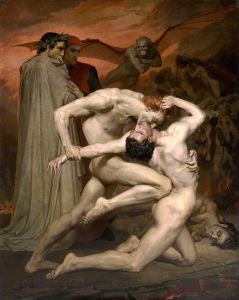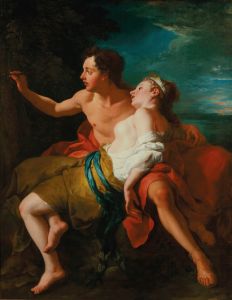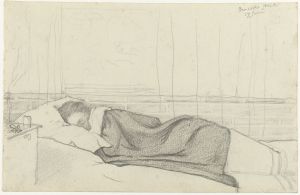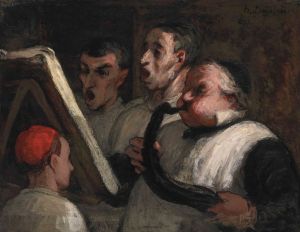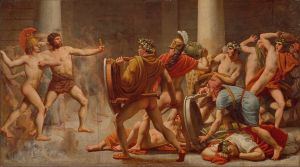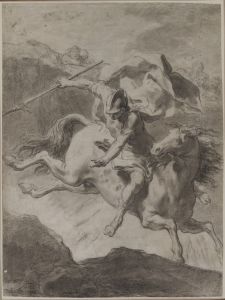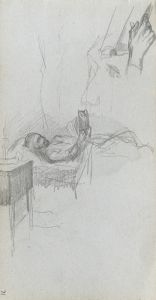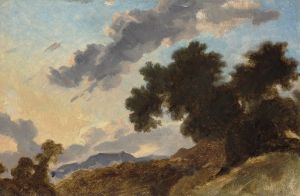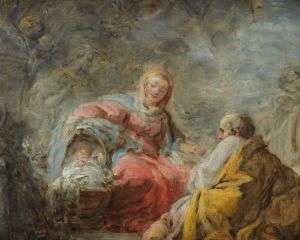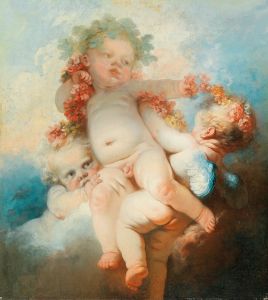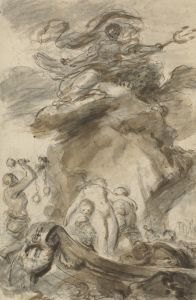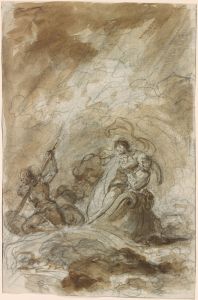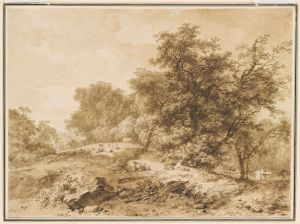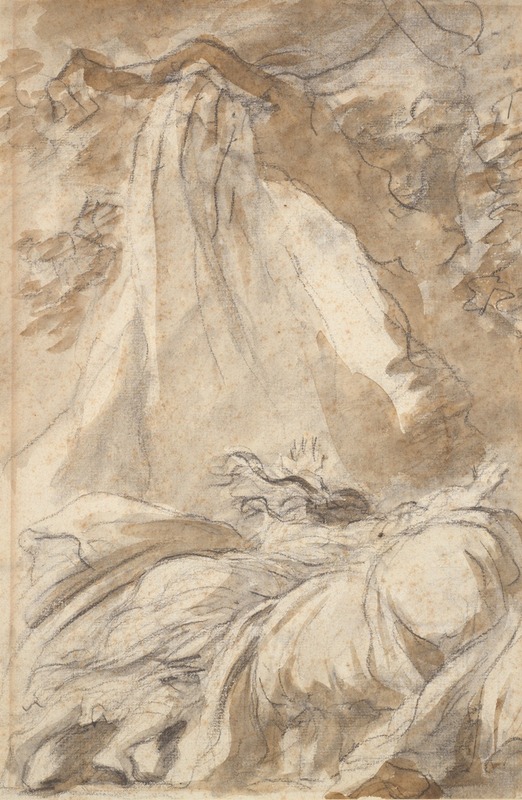
In despair, Olympia throws herself on the bed, illustration for Canto X, verse 27, of Lodovico Ariosto’s ‘Orlando Furioso’
A hand-painted replica of Jean-Honoré Fragonard’s masterpiece In despair, Olympia throws herself on the bed, illustration for Canto X, verse 27, of Lodovico Ariosto’s ‘Orlando Furioso’, meticulously crafted by professional artists to capture the true essence of the original. Each piece is created with museum-quality canvas and rare mineral pigments, carefully painted by experienced artists with delicate brushstrokes and rich, layered colors to perfectly recreate the texture of the original artwork. Unlike machine-printed reproductions, this hand-painted version brings the painting to life, infused with the artist’s emotions and skill in every stroke. Whether for personal collection or home decoration, it instantly elevates the artistic atmosphere of any space.
Jean-Honoré Fragonard's illustration "In despair, Olympia throws herself on the bed" is a visual interpretation of a scene from Canto X, verse 27, of Ludovico Ariosto’s epic poem "Orlando Furioso." Fragonard, a prominent French Rococo painter, is renowned for his exuberant and fluid style, which often captures moments of romance, drama, and whimsy. This particular illustration is part of a series of works by Fragonard that depict scenes from "Orlando Furioso," a narrative that has inspired many artists since its publication in the early 16th century.
"Orlando Furioso," written by Italian poet Ludovico Ariosto, is a continuation of Matteo Maria Boiardo's unfinished romance "Orlando Innamorato." The poem is a chivalric romance that weaves together various storylines involving knights, love, and adventure. One of the central themes of the poem is the madness of Orlando, a knight who becomes insane due to unrequited love. The poem is celebrated for its intricate plot, vivid characters, and exploration of human emotions.
The scene illustrated by Fragonard involves the character Olympia, who is depicted in a moment of despair. In the narrative of "Orlando Furioso," Olympia is a princess who faces numerous trials and tribulations, including the loss of her lover and the threat of forced marriage. Her story is one of the many interwoven tales within the epic that highlights themes of love, betrayal, and resilience.
Fragonard's illustration captures the emotional intensity of Olympia's despair. The composition likely emphasizes her dramatic pose as she throws herself onto the bed, a gesture that conveys her deep sorrow and helplessness. Fragonard's use of light and shadow, along with his characteristic fluid brushwork, would enhance the emotional impact of the scene, drawing viewers into Olympia's plight.
The choice of this particular scene by Fragonard reflects the Rococo era's fascination with emotion and drama, as well as the period's interest in literary and historical subjects. Fragonard's work often focused on intimate and personal moments, and his illustrations for "Orlando Furioso" are no exception. They offer a glimpse into the artist's ability to translate complex literary themes into visual form, capturing the essence of the characters and their stories.
Fragonard's illustrations for "Orlando Furioso" are part of a broader tradition of artists engaging with Ariosto's work. The poem has been a rich source of inspiration for visual artists, composers, and writers over the centuries, each bringing their unique interpretation to its timeless themes. Fragonard's contribution to this tradition is notable for its emotional depth and artistic finesse, characteristics that have cemented his reputation as one of the leading figures of the Rococo movement.
In summary, Jean-Honoré Fragonard's illustration "In despair, Olympia throws herself on the bed" is a poignant depiction of a scene from Ludovico Ariosto’s "Orlando Furioso." Through his masterful use of composition and technique, Fragonard captures the emotional turmoil of Olympia, reflecting the broader themes of love and despair that permeate the epic poem. This work is a testament to Fragonard's skill as an artist and his ability to bring literary narratives to life through his art.





